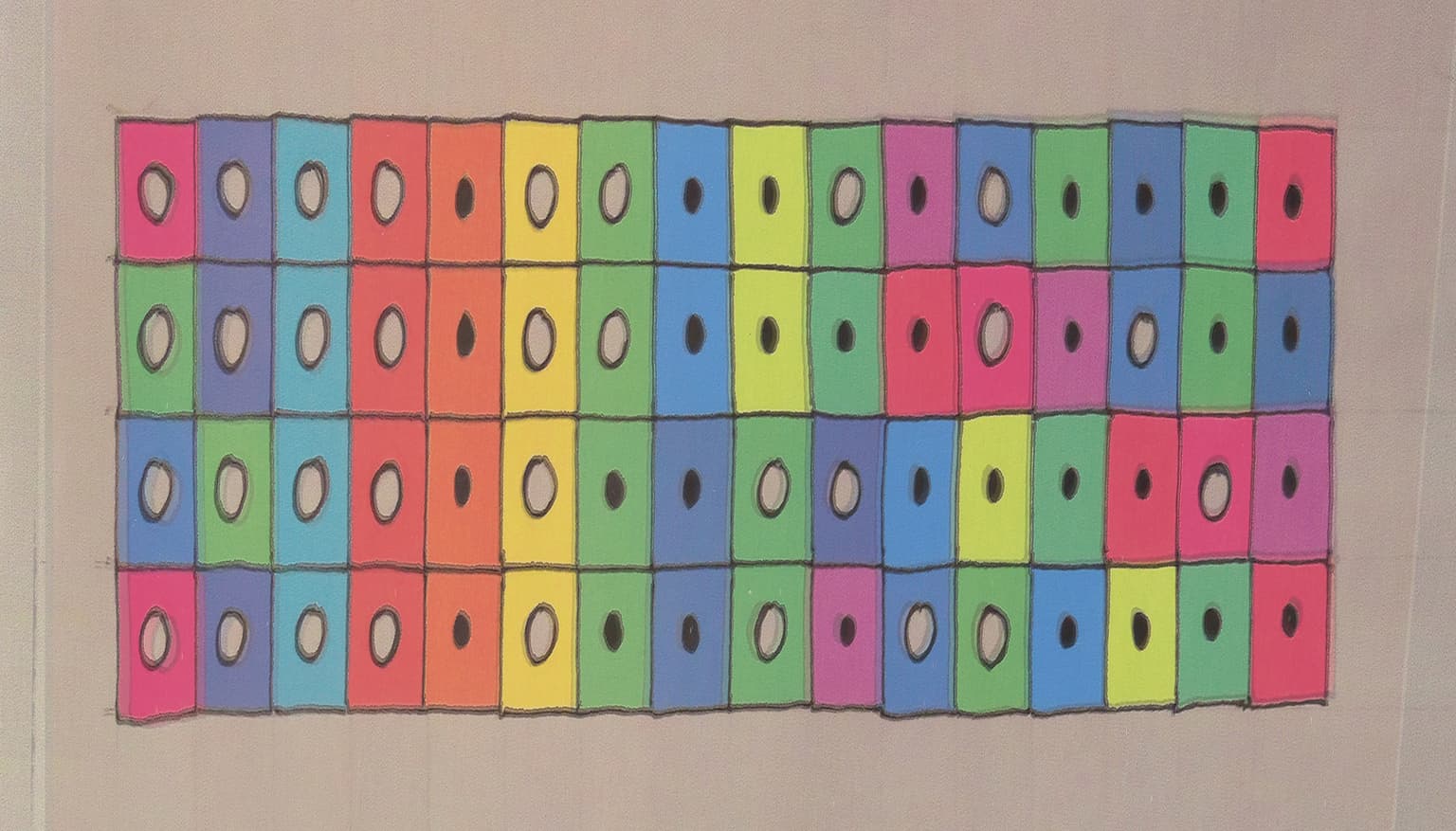Karl Kattchee
Artists
Karl Kattchee
Associate Professor of Mathematics
University of Wisconsin - La Crosse
Wisconsin, USA
Statement
Mathematics can be the subject of art, or it can be part of the process. Sometimes both happen at the same time. I like to experiment, and I have used pencil, pen, pastel, acrylic, paper, cardboard, scanners, cameras, computers, printers, metals, and wood in creating mathematical artwork. My current work is based upon de Bruijn sequences of order n, which are binary strings of length 2^n whose contiguous length-n substrings form the collection of all possible length-n binary strings.
Artworks

De Bruijn Music #2
18 x 31 cm
digital print
2018
There are 16 order-four de Bruijn sequences altogether. After associating the sequences which differ by a reversal of order and/or swapping of 0s and 1s, we have four equivalence classes. Each row in this print contains an order-four de Bruijn sequence (circle=0 and dot=1), namely, the representative from its equivalence class which is lowest in lexicographic order. Each de Bruijn sequence can be replaced with a permutation of the numbers 0,1,2,...,15 by converting each length-four substring into its decimal form as a number. The cell-coloring scheme is based on these permutations.

Untitled (Order 3)
8 x 8 cm
ink on paper
2019
This is a collection of four closed paths on an underlying 8x8 grid. Each path arises from the order-three de Bruijn sequence 00010111, which translates naturally into the permutation {0,1,2,5,3,7,6,4}. This permutation is paired with itself and three of its translations to form the four closed paths, which I call de Bruijn circuits (see my Proceedings article). They form a complete collection of the de Bruijn circuits in order three.
They are drawn very small.